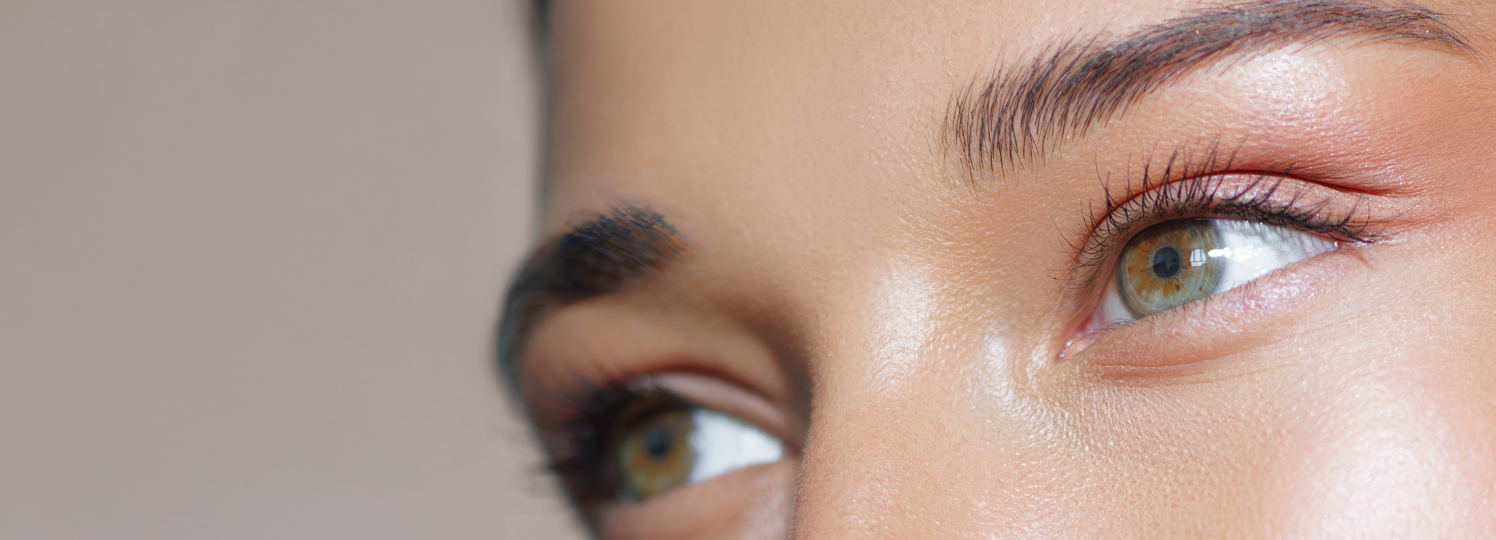

Eye Care



Eye Care
A perfect oil-free moisturiser for the skin around the eye area. The mild ingredients are the best for this area, as effectiveness and compatibility can be combined in an optimal way. Application of the oil-free Eye Gel to cleansed skin provides particularly intensive nourishment and replenishment of the eye area. Afterwards you can apply the Eye Cream which can also be lightly massaged in.
15 ml Jar
Art.-Nr. 9010
7 ml Tube
Art.-Nr. 9422
Aqua, Glycerol, Ethanol, Urea, Sodium Lactate, Panthenol, D-Panthenol, Hyaluronic Acid, Allantoin
Aqua:
Water. It accounts for around 65% of the weight of the human body and is therefore of fundamental importance for bodily functions, including those of the skin. In many cosmetic products (aqueous solutions, cleansers, emulsions), water is the ingredient with the largest proportion of the formulation in terms of quantity and forms the basis of the aqueous phase in emulsions. Water is a good solvent for polar (hydrophilic) substances such as alcohols, water-soluble vitamins or salts. For use in cosmetic products, the water used is generally pre-treated to remove microorganisms that could lead to spoilage of the product or dissolved salts that may impair the stability of emulsions or gels (sterilization and desalination).
Glycerol:
Glycerin: Is produced in the body during fat metabolism and has a moisturizing effect on the skin in low concentrations.
Ethanol:
Ethyl alcohol: Identical to the body. Also popularly known as “alcohol”, solvent; refreshing, antibacterial. Contrary to claims to the contrary, there is no risk of a drying effect on the skin at normal application concentrations!
Urea:
The water-soluble urea is used in numerous cosmetic products. Urea is a component of the natural moisturising factors of the horny layer (content between 7 % and 12 %; up to half lower in chronically dry skin) and has a high water-binding capacity. It contributes to sustained moisturisation of the skin and reduces transepidermal water loss. Urea has a keratoplastic effect, in higher concentrations it has a keratolytic effect and is therefore also used in the care of skin affected by psoriasis or atopic dermatitis (neurodermatitis). Urea is also able to reduce the irritating potential of surfactants.
Sodium Lactate:
Sodium salt of lactic acid: Has a moisturising effect on the skin, with the physiological pH value of the skin averaging 5.5. Important component of the natural moisturising factor (NMF) and the acid mantle of the skin.
Panthenol:
D-panthenol = provitamin B5: Improves and increases the skin's ability to retain moisture, has an anti-inflammatory effect, reduces or inhibits itching. Stimulation of epithelialization: Small wounds (shaving), skin abrasions, blisters heal better. When used in hair care products, it is not only deposited on the hair and scalp, it also penetrates them and has a long-term effect. As pantothenic acid is an important component of healthy hair, the precursor D-panthenol serves as “food for the hair” according to scientific studies. It provides the hair with long-lasting moisture, improves the combability of the hair, reduces the formation of split ends, improves the condition of damaged hair, thickens the hair and gives it shine. The brittleness of fingernails is reduced.
D-Panthenol:
D-Panthenol = provitamin B5: Improves and increases the skin's ability to retain moisture, has an anti-inflammatory effect, reduces or inhibits itching. Stimulation of epithelialization: Small wounds (shaving), skin abrasions, blisters heal better; has a regenerating effect on the skin, against chapped and brittle skin. When used in hair care products, it is not only deposited on the hair and scalp, it also penetrates them and has a long-term effect. As pantothenic acid is an important component of healthy hair, the precursor D-panthenol serves as “food for the hair” according to scientific studies. It provides the hair with long-lasting moisture, improves the combability of the hair, reduces the formation of split ends, improves the condition of damaged hair, thickens the hair and gives it shine. The brittleness of fingernails is reduced.
Hyaluronic Acid:
Is a natural component of connective tissue and the extracellular matrix of the dermis. In chemical terms, it is a long-chain polymer of two saccharides (sugars). Hyaluronic acid (HS) is able to bind much higher quantities of water in relation to its own weight. In this way, it is able to increase the moisture content of the skin and tighten the skin by swelling, thereby reducing wrinkles. Depending on the chain length of the HS molecules, they can penetrate the skin to different depths and develop their effect there. Long-chain hyaluronic acid is more suitable for skin hydration than the short-chain versions, but penetrates the skin less well. However, there is no serious evidence that hyaluronic acid - regardless of the chain length - penetrates to the desired site of action, the dermis: it cannot penetrate the two barriers of the horny layer and the basement membrane. Commercially available types have 50, 130, 300, 800 and 2,000 kDa. Penetration is considered possible from 25 kDa, although a pro-inflammatory effect may then be observed. In this respect, the use of long-chain hyaluronic acid makes the most sense for the treatment of dry skin. The more soluble sodium salt of hyaluronic acid (INCI: sodium hyaluronate) is generally used in cosmetic products. The mode of action of both forms is identical.
Allantoin:
Allantoin is a body-identical, water-soluble substance and is chemically related to urea. It is found in various plants but is now produced synthetically for use in cosmetics. Its most important property is the stimulation of new cell formation. It promotes collagen formation, skin regeneration and wound healing, stimulates desquamation, smoothes the skin and can have a soothing effect on atopic dermatitis.